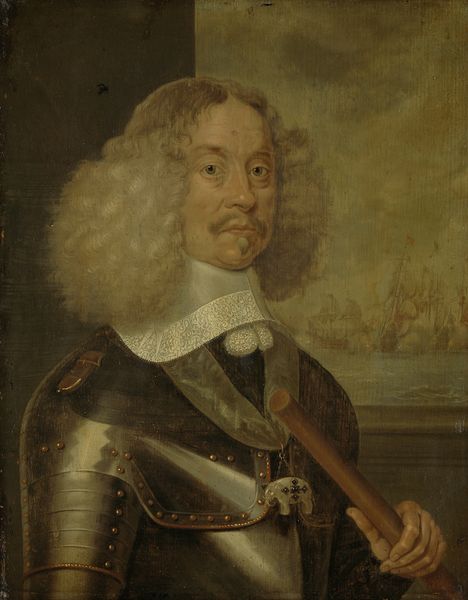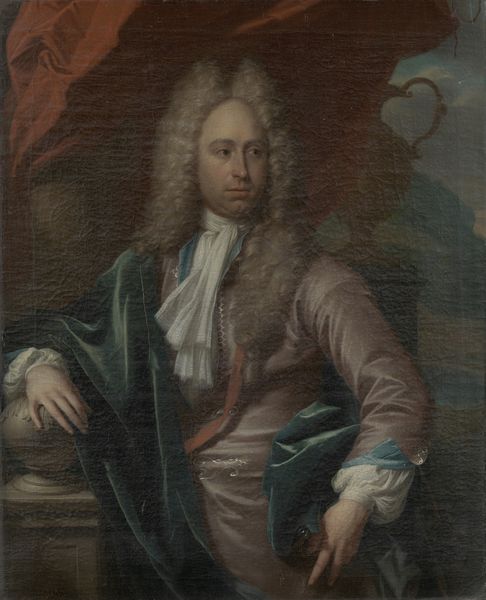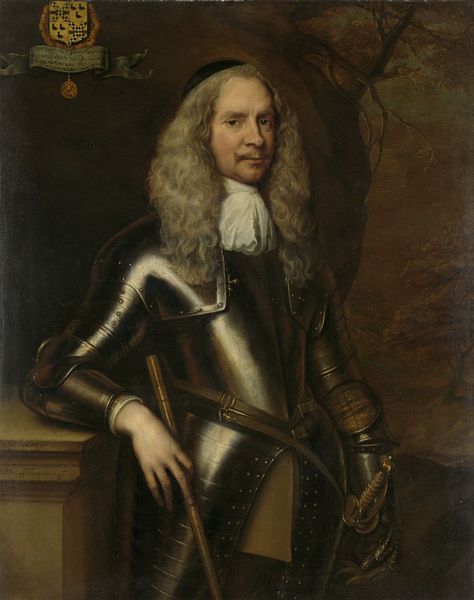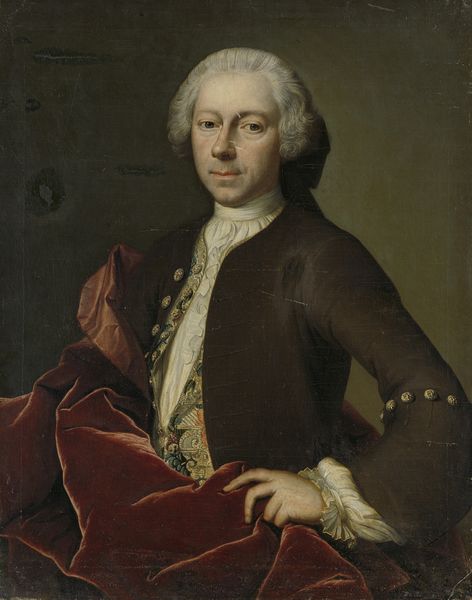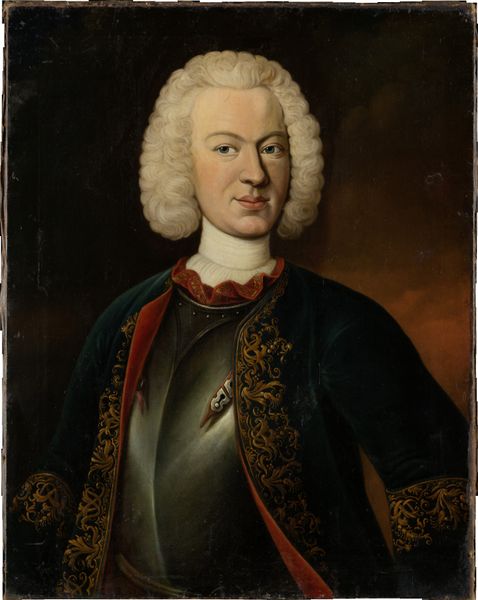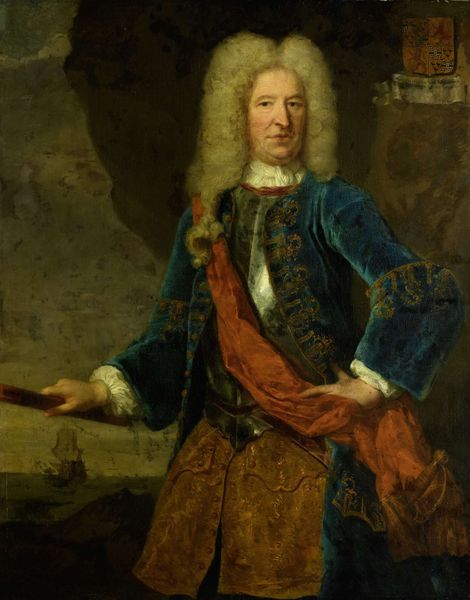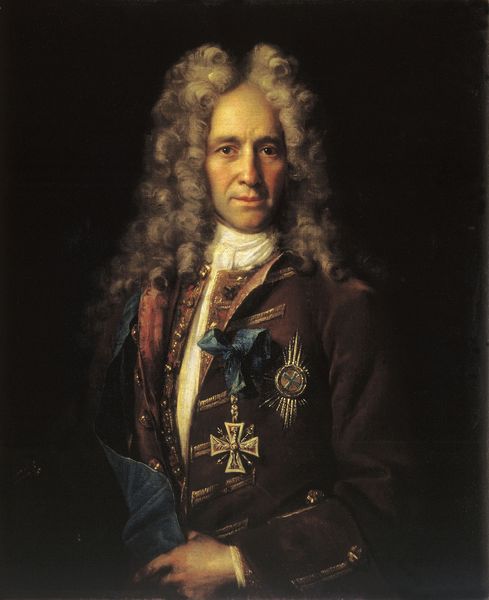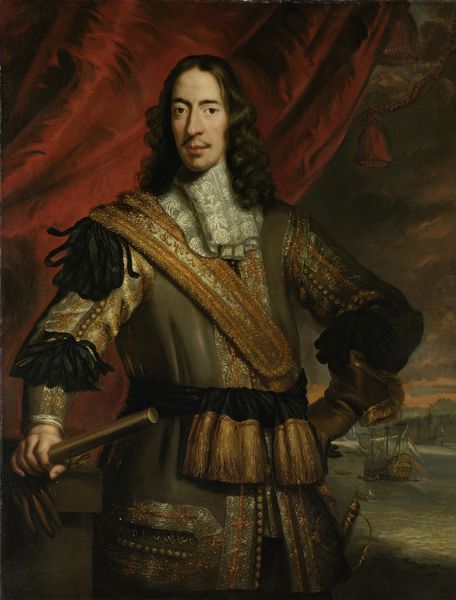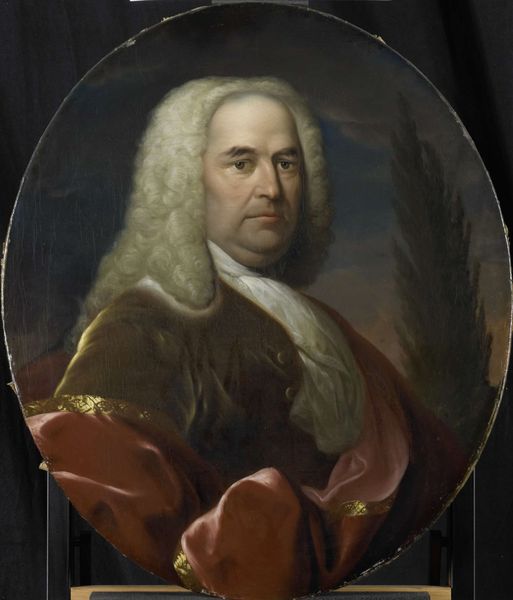
oil-paint
#
portrait
#
baroque
#
oil-paint
#
figuration
#
academic-art
Dimensions: height 112.5 cm, width 96 cm
Copyright: Rijks Museum: Open Domain
Curator: Here we have a portrait believed to be of Jacob Mossel, painted around 1755 using oil paint. He appears quite dignified, don't you think? Editor: Dignified, perhaps, but there's something melancholic lurking in those eyes. The heavy darkness of the background, coupled with that almost weary gaze… It speaks to a burden, I think. Curator: That's a wonderful reading. Mossel, in his time, served as Governor-General of the Dutch East Indies, a role of immense power and responsibility. Perhaps the weight of colonial administration is what we're seeing reflected here? Editor: Absolutely. It's impossible to divorce this image from its historical context. Look at the details – the opulent red coat, the symbol of status – set against the implied human cost of Dutch imperial ambition. It's a complex narrative of power and privilege, all condensed in one gaze. Curator: It makes you wonder what was truly on his mind. Beyond the governance and politics, who was this man? What did he dream about when not commanding the VOC fleet? I bet he fancied himself a bit of a poet, scribbling sonnets between trade deals. Editor: And it's vital to acknowledge the ways in which wealth acquired from colonized lands would support a lavish lifestyle shown here, creating these idealized images. This isn't just a neutral "portrait" but rather a complex projection of self authorized by imperial power. Curator: Indeed. Even something seemingly innocuous like the lace at his neck becomes a marker of that power and influence. Editor: So true. And it gives pause to think of whose hands labored for that lace. How it arrived here... what privileges allowed Mossel to embody that position so visibly in visual form? Curator: The painting is larger than life. Looking at Mossel’s calm yet world-weary glance, it's as though he invites our contemplation on such intricacies even from across time. Editor: Yes, a glimpse into the complexities of the colonial era and our responsibilities when beholding images like this now.
Comments
rijksmuseum almost 2 years ago
⋮
The highest-ranking Dutch East India Company (VOC) official in Asia was the governor-general. He presided in the Castle of Batavia (now Jakarta, Indonesia), a fort built by the Dutch. The assembly hall in the Castle of Batavia was the centre of Dutch power in Asia. The walls were hung with portraits of all of the governors-general. Most of the 18th-century examples shown here were painted in Asia, often by anony¬mous artists.
Join the conversation
Join millions of artists and users on Artera today and experience the ultimate creative platform.

